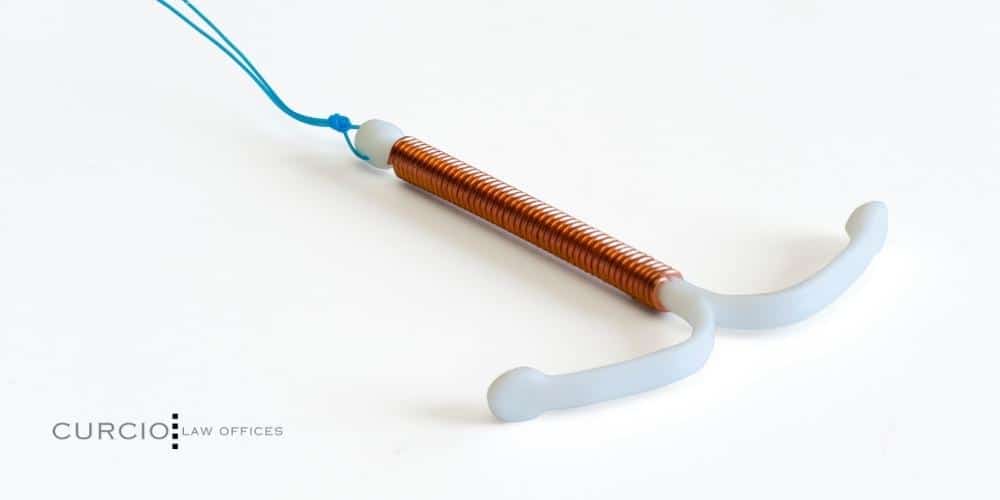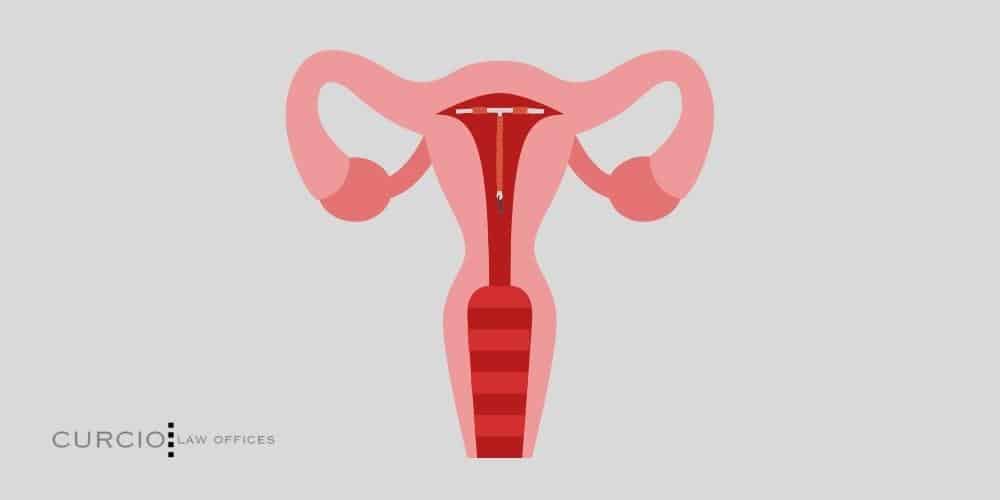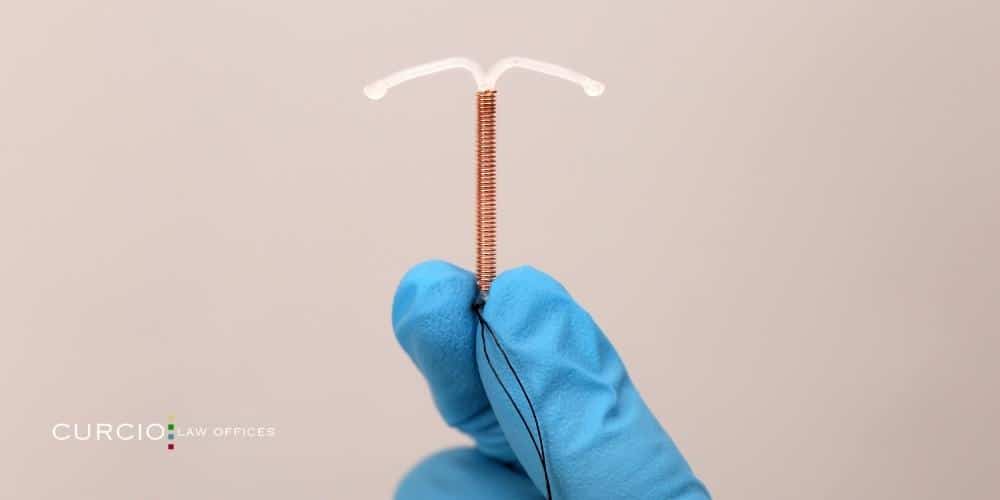CHICAGO PARAGARD LAWYER
PRACTICE AREAS
Chicago Mirena Lawyer
Over the past few years, women have filed thousands of Paragard IUD lawsuits due to a host of health problems partially caused by the device breaking. Because many of these health complications are life-threatening, many of these women have spent thousands of dollars in medical treatment and even suffered permanent infertility. If you have had a Paragard IUD implanted and have since experienced pain and suffering, you have grounds to pursue legal action. The Paragard IUD lawyers at Curcio & Casciato have what it takes to fight for maximum compensation on your behalf. Call our law firm today at 312-321-1111 to schedule a free consultation.

What is an IUD?
An intrauterine device (IUD) is a tiny birth control device. Doctors insert the t-shaped device into a woman’s uterus to prevent pregnancy. IUDs are a form of long-term birth control. In other words, IUD devices can stay inside a woman’s uterus and prevent pregnancy for 3 to 12 years, depending on the type of IUD implanted. An IUD device can be removed at any time.
Types of IUDs
There are two main types of IUDs: hormonal and non-hormonal. Mirena, Liletta, Kyleena, and Skyla are the hormonal brands of IUDs currently on the market. Meanwhile, the only brand of non-hormonal IUD on the market is the Paragard IUD. The Paragard IUD is also known as the copper IUD. The IUDs that release hormones tend to last between 3 to 7 years, depending on the brand you choose. Meanwhile, the non-hormonal IUD with the copper coil can last up to 12 years.
How Do IUDs Work?
Hormonal and non-hormonal IUDs work differently inside the uterus. Both types of IUDs work by creating a deadly environment for sperm so that it can’t fertilize an egg. More specifically, hormonal IUDs work by releasing a hormone called progestin. This hormone creates thicker cervical mucus which makes it difficult for sperm to enter the uterus. If it does enter the uterus, the thick cervical mucus would make it really difficult for sperm to move and get to an unfertilized egg. Progestin also creates a thinner uterine lining which makes egg implantation much more difficult.
The copper IUD – Paragard – works differently. Basically, the copper wire that’s wrapped around the plastic, t-shaped device releases ions into the uterus. Copper ions create a deadly environment for sperm in the uterus, rendering them unable to fertilize an egg most of the time.
How Effective is an IUD?
IUDs are one of the most effective forms of birth control on the market. According to the CDC, both hormonal and non-hormonal IUDs are more than 99% effective in preventing pregnancy. In other words, less than 1 woman out of every 100 women using an IUD will get pregnant in the span of a year.
How Doctors Insert IUDs
IUD insertion is very quick, only taking a few minutes. Most doctors don’t provide pain medications or sedation during the insertion of this birth control device. However, you may be able to ask your doctor for some kind of sedation. Many women claim that IUD insertion is incredibly painful, but everyone’s experience is different. You may only feel some mild discomfort. Either way, it’s best to take some over-the-counter pain medication before your IUD insertion.
The medical professional will start the insertion process by inserting a speculum into the vagina. A speculum is a metal medical device used to open a hollow part of the body. Many people describe the shape as “duck-billed.” A speculum is commonly used in pelvic exams. The doctor will then use an insertion tool to push the IUD through the cervix and into the uterus.
Some women feel dizziness, lightheadedness, abdominal cramping, “pinching” cervical pain, and nausea during the insertion procedure. Because of these side effects, it’s best to have someone drive you home afterwards. It’s normal to experience spotting, cramping pain, and general soreness following an IUD insertion. This pain can be managed with over-the-counter pain medication and ice or heat packs on the lower abdomen.

About the Paragard IUD
The Paragard IUD device, in particular, has been the subject of multidistrict litigation in the Northern District of Georgia for several years. As of May 2022, there are 1,121 pending Paragard IUD lawsuits.
Teva Pharmaceuticals USA Inc. manufactures the Paragard device. Paragard IUDs first received approval from the Food and Drug Administration (FDA) in 1984. The Teva pharmaceutical company issued a Paragard recall in 2014 for two lots of the copper wire device. A report from the FDA claims that the Paragard device was recalled due to “lack of assurance of sterility.” Teva Pharmaceuticals USA Inc. has not issued anymore recalls since the IUD products liability litigation began.
About the Paragard Lawsuits
So why are women filing lawsuits about Paragard IUDs? In short, the lawsuits claim that:
- The Paragard IUD device has both design and manufacturing defects.
- Women weren’t properly warned about the serious complications that the Paragard IUD device can cause.
- The Paragard IUD device manufacturer is negligent.
A design defect indicates that a Paragard IUD is inherently dangerous due to its design. Many women claim in their lawsuits that their Paragard IUD fractured during removal. This is because the IUD has “arms” that stick out in a t-shape. Due to this design flaw, the Paragard cases claim that the pharmaceutical company should have known about the risk of the device breaking during the IUD removal process. Therefore, Teva Pharmaceuticals should be held accountable because the Paragard IUD created a predictable risk of broken IUD pieces even though the device was inserted, used, and removed as it was designed.
Strict product liability dictates that Teva Pharmaceuticals should be held responsible for adverse events directly caused by its medical devices if they had some kind of defect when they left the manufacturer.
As for improper warning: the packaging that came with the copper IUD did not state that the device could break during Paragard removal. With a warning like this, doctors could have been prepared to prevent or treat this complication during IUD removal. Additionally, some women could have chosen against the birth control device if they had had sufficient warning.
Lastly, Paragard lawsuits claim that Teva Pharmaceuticals is negligent because:
- They owed a specific duty of care to women receiving the Paragard device.
- They breached that duty of care through defective design, defective manufacturing, and lack of warning.
- Their breached duty of care directly caused serious injuries to thousands of women.
- These serious injuries led to numerous damages for which Paragard victims deserve financial compensation for.
Injuries Caused by the Paragard IUD
So, what kind of health problems and injuries did the Paragard IUD cause? The women injured in the Paragard IUD lawsuits claim to have suffered from the following complications:
- Serious infections
- Perforation of the cervix or uterine wall when the arms of the Paragard IUD break off
- Pelvic Inflammatory Disease (PID)
- IUD migration, which is when the device moves out of the uterine cavity into other parts of the body
- Heavy bleeding
- Chronic pain
- Ectopic pregnancy
- The need for a hysterectomy (because the IUD caused significant damage to the uterus), which causes permanent infertility
- The need for a laparoscopy or a laparotomy in order to remove the broken IUD pieces
If you have suffered from one of the aforementioned health complications due to your copper wire IUD, you may have grounds to file a Paragard lawsuit. Our Chicago Paragard lawyers have extensive experience in litigating all sorts of defective medical device cases. We can help you receive the justice and compensation you deserve.
If you had an unnecessary hysterectomy because of a Paragard IUD device, you may be able to file a hysterectomy lawsuit in Chicago.
IUD Settlement Amounts
At the time of writing, there hasn’t been a Paragard settlement yet from the ongoing multidistrict litigation. No one knows exactly how much the potential settlement will be, but Paragard IUD lawsuit attorneys are certainly pursuing a multi-million dollar settlement for all Paragard victims.
For a good idea of how large this Paragard settlement could be, let’s recount a similar defective medical device lawsuit. Bayer Pharmaceuticals faced thousands of lawsuits because of organ perforation caused by the Mirena IUD. In 2018, Bayer offered to settle 2,700 lawsuits with $12.2 million.
With a Paragard IUD lawsuit settlement, Paragard victims could receive financial compensation for the following damages:
- Past and future medical expenses
- Physical pain and suffering
- Emotional distress associated with general health trauma and permanent infertility
- Lost wages
Chicago Paragard attorneys can help you file an IUD lawsuit so that you can receive compensation for all the damages listed above. We have Chicago emotional distress lawyers who can show you how to calculate pain and suffering and help you calculate lost wages.

Call Chicago IUD Lawyers at Curcio & Casciato Today
The Paragard IUD lawyers at Curcio & Casciato have decades of combined experience in litigating defective medical device cases. If your Paragard IUD caused you significant pain and suffering and forced you to spend thousands of dollars on medical treatment, you may have grounds to file a Paragard lawsuit. We want to start an attorney-client relationship with you and help you obtain adequate compensation. To schedule a free consultation with our Chicago product liability lawyers, call 312-321-1111 today.


